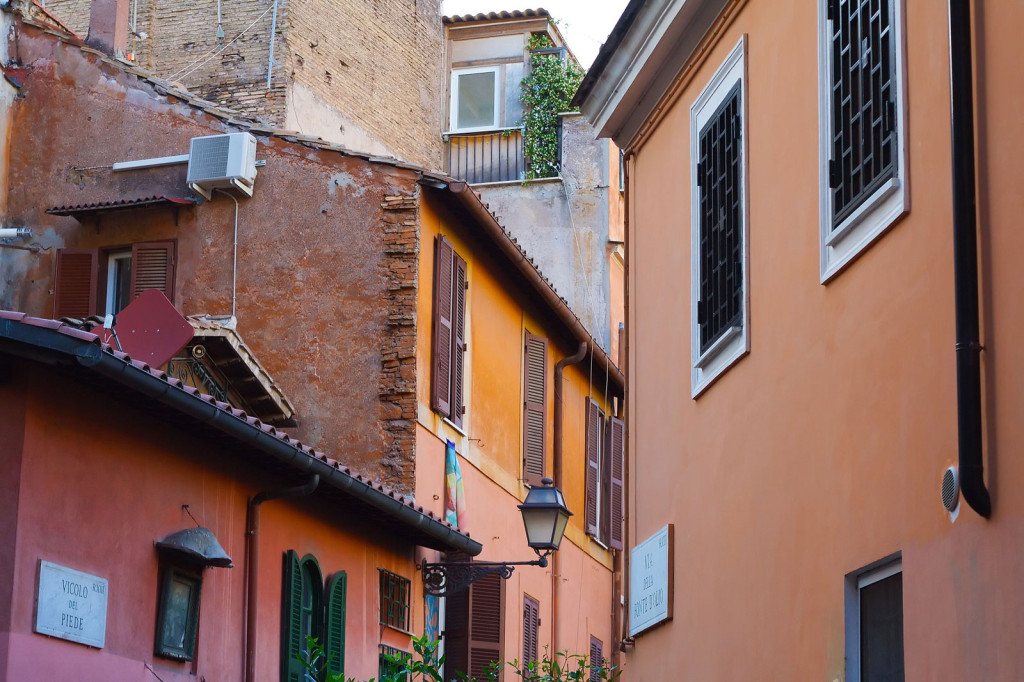
Houses in Trastevere, a typical neighborhood in Rome. Photo © Anthony Maragou/123rf.
The euro-to-U.S. dollar exchange has oscillated around 1.30 for the past few years, meaning that Italy is still expensive for anyone earning greenbacks. Whereas some shoppers might remember everything from a cappuccino to a leather jacket as a good buy in Italy, now travelers are counting their coins much more carefully. Renting a home in the largest Italian cities is doable when compared to New York or San Francisco.This is not to say that everything in Europe is out of financial reach. Renting a home in the largest Italian cities is doable when compared to New York or San Francisco. In the most expensive cities, Rome and Milan, €1,000 per month should land you a single-bedroom apartment somewhere near downtown. (Keep in mind, though, that this figure represents about an entire monthly salary in Italy.)The longer you stay, the more hidden costs you will find. More often than not, they take the form of taxes. Like most European governments, Italy likes to discourage the abuse of its most precious commodity, energy. Heating a modest apartment of 70 square meters, for example, will cost at least €100 per month in the winter (and Italy is not a very cold place), thanks to high fuel taxes. For that reason, electricity is just as costly. No Italian would ever leave the house without first turning off all the lights.
Cars can almost be considered a luxury. Gasoline prices are more than twice what they are in the United States, and insurance doesn’t come cheap either. To insure a 10-year-old Volkswagen in the city, a young person will spend about €1,000 per year for the minimum coverage—again a monthly salary for the typical Italian under 30.
How much you should budget per month depends, of course, on how much you earn and where you want to live. As a rule of thumb, the farther south you go, the cheaper life becomes. To get some idea of the discrepancy, rent in Naples costs about half as much as it does in Milan. And even Naples can be out of reach for those who live in small towns in Calabria and Basilicata.
Not coincidentally, the cheapest place to live is also where there are the fewest jobs. In 2012, unemployment in Italy among people in their 20s stood at 30 percent. In Sicily, that number was 40 percent. That bears repeating. Close to half of Sicily’s young people have no jobs.
The figures are lower than the national average in Milan and Turin, which is easily understood when you consider that, of the 30 companies that traditionally made up the benchmark index on Italy’s stock exchange, 17 have their headquarters in one of those two cities. None have their headquarters in the South.
The smoggy North may appear to be an unpleasant place to spend your time when compared to the sunny lemon groves of Sicily, but then again, so is New Jersey when compared to the Florida Keys. Floridians can expect to be paid in “sunshine dollars.” So can Sicilians.
Your compensation will depend on a lot of things: the kind of job, your skills and experience, whether the company is Italian or North American, etc. But in the broadest terms, a college graduate with five years’ experience who makes US$50,000 per year in a major North American city might expect to be paid half of that in Italy. The majority of Italian blue-collar workers and many entry-level white-collar workers earn in the vicinity of €1,000 per month.
When you hear Italians complain about the cost of living, you might groan to yourself that life is tough all over. But when you consider that most annual salaries in Italy are well under €2,000 a month after taxes, you start to realize that in order for that kind of dough to feed a household here, it would take the miracle of five loaves and two fish.
For simplicity’s sake, let’s look at the numbers for a single person renting an average apartment of 60 square meters in the capital.
Homeowner costs, of course, greatly depend on the type of mortgage and the buying price of the home, but those who plan to own an apartment in the city should also budget at least €1,000 per year on condominium fees and €300 per year on trash collection.
It’s a good thing coffee’s cheap: only €1.20 for an espresso at the local bar.